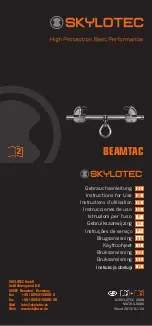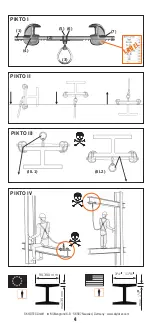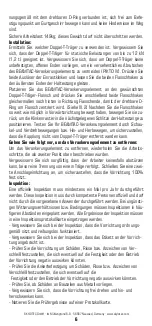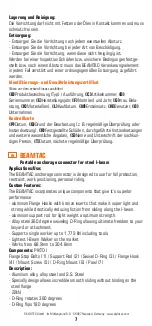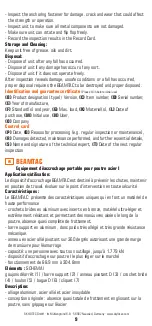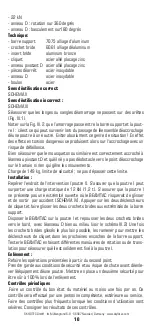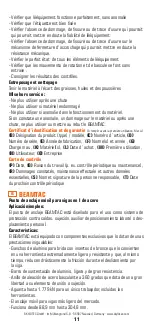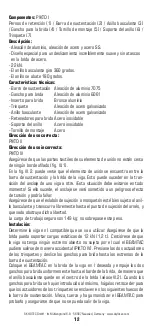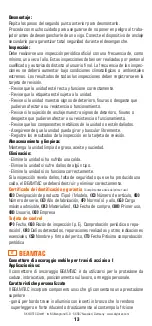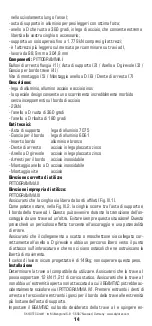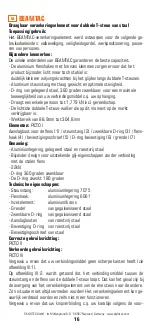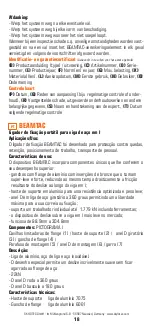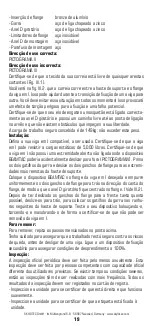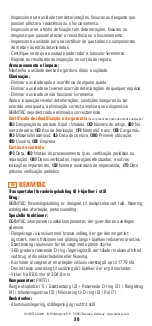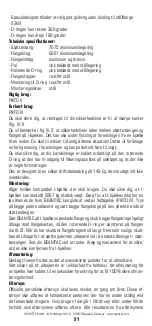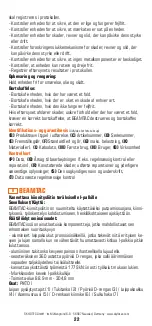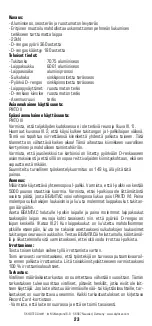
SKYLOTEC GmbH · Im Mühlengrund 6-8 · 56567 Neuwied, Germany · www.skylotec.com
8
Technical:
- Support Rod 7075 aluminum alloy
- Flange Hook 6061 aluminum alloy
- Flange Insert aluminum bronze
- Pawl
zinc plated alloy steel
- Swivel D-Ring zinc plated alloy steel
- Flange Stops stainless steel
- D-Ring Mount stainless steel
- Mount Screw steel
Proper direction of use:
PIKTO II
Improper direction of use:
PIKTO III
Make sure your lanyard webbing is clear from any sharp edges (Fig. III.1).
You will notice in Fig. III.2. that the lanyard runs between the Support Rod
and the I-Beam flange. This can happen during transition of the anchorage
from one beam to another. You must avoid this situation at all time! This
will cause a dangerous twisting effect to the anchorage and a potential of
failure.
Make sure your snap link or carabiner is properly connected to the Swivel
D-Ring and has a free path to the attachment point on the harness and that
there is no obstacles obstructing its freedom.
Designed safe working load is 149kg; do not exceed this weight.
Installation:
Determine your compatible I-beam to be used. Make sure the I-beam can
withstand 12 kN (1,2 t) static loads. Make sure the I-beam does not have an
unattached open end where the BEAMTAC could accidentally slide off (PIKTO
IV). Press both Pawls Triggers and slide both Flange Hooks to the outmost
ends of the Support Rod.
Set the BEAMTAC on the desired I-beam flange and push both Flange Hooks
back towards the flange edge equally so that the swivel D-Ring is centered
on the flange. (See III.2) Once you have slid the Flange Hooks as far forward
as possible, slide them back to set the Pawl Triggers into next slots of the
Support Rod. Test your BEAMTAC by rocking, twisting and maneuvering to
make certain it cannot be removed from the I-beam.
To remove:
Repeat steps in the second bullet above to remove.
Use caution to ensure worker is safe from a fall hazards before disconnecting
from a beam. Connect to secondary anchor device to ensure 100% tie-off
conditions.
Inspection:
Official periodically inspection must be made at least annually. These inspec-
tion must be made by competent persons of official capacity other then the
intended users. If server weather or condition exist then inspections must
be carried out more frequency. All inspection results must be logged in the
Record Card.
- Inspect unit to make sure it is straight and operates smoothly.
- Inspect unit to make sure the label is affixed to unit.
- Inspect unit for damage, crack and wear that could affect the strength or
operation.

